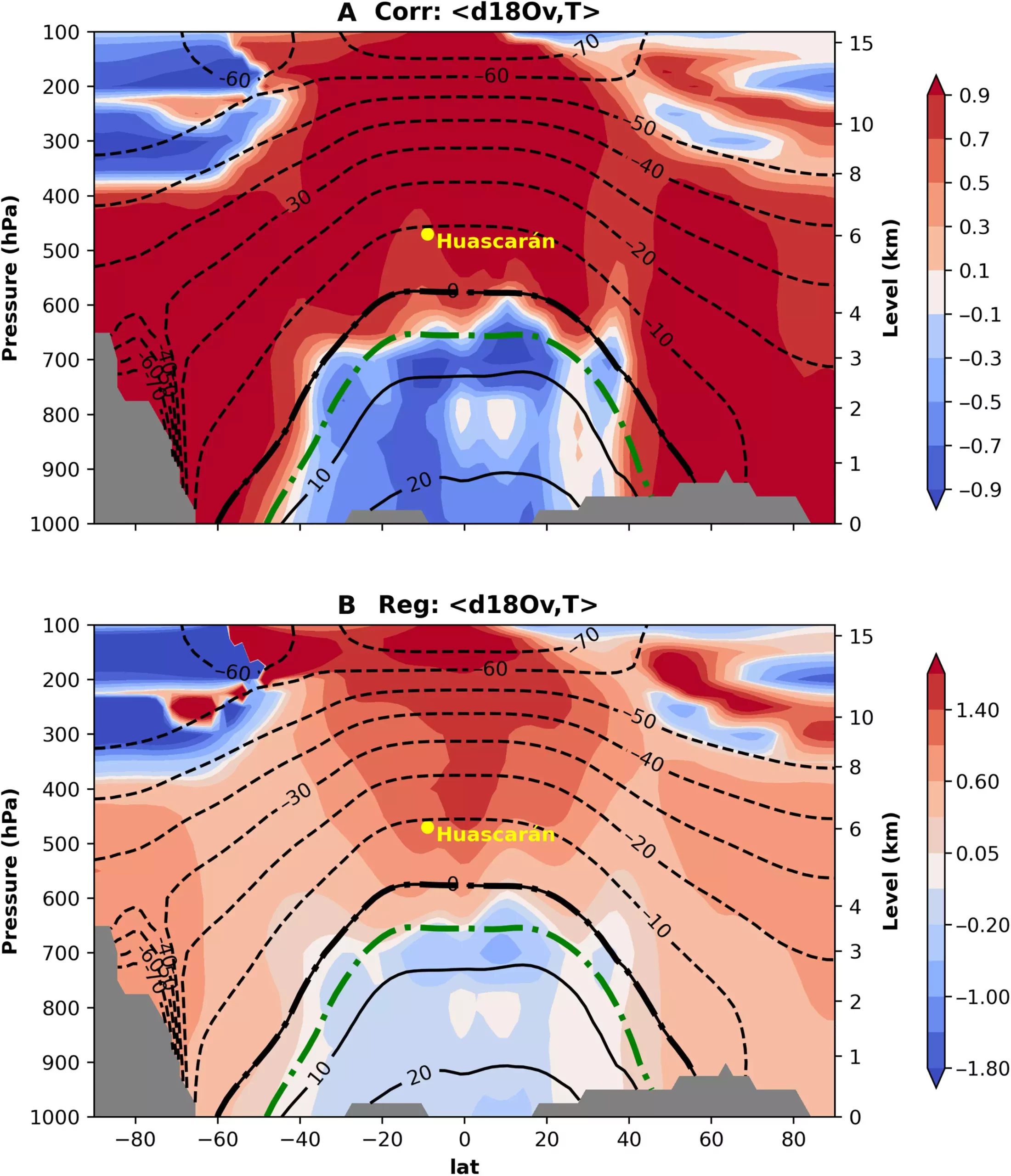Ice recovered from high tropical mountains has provided scientists with valuable information about Earth’s past climate changes. Through a study led by scientists at The Ohio State University, it was discovered that oxygen-stable isotope records stored in tropical mountain glacier ice cores can offer a distinct paleoclimate history of the middle and upper troposphere. By combining various data sources and analyzing temperature changes in this region, the study sheds new light on climate dynamics throughout the ages.
Unlike ice cores collected from Greenland or Antarctica, the ice cores from tropical regions provide a unique perspective on Earth’s mean temperature. The ice core collected from Nevado Huascarán in Peru, a high-mountain region, offers evidence that is “just right” for measuring global mean temperature over time. Due to its elevation and location, it is not influenced by regional features of the warming environment, making it a reliable indicator of surface global mean temperature.
The study revealed the first solely land-based estimate of global stage cooling during Earth’s last glacial period. The surface temperatures during this period decreased by as much as 5.9°C. This insight provides valuable information about past climate changes and helps improve our understanding of future climate scenarios. The ice core acts as a weather tower silently recording atmospheric history, allowing scientists to reconstruct temperature responses during periods of rapid climate change.
The ice cores from tropical regions also preserve greenhouse gases, including potent ones like methane. By extracting methane from the ice cores, scientists can analyze its atmospheric concentration over time. This is crucial as methane is a significant contributor to global warming. The high-elevation ice cores in tropical regions, where temperatures are cold and melting does not occur, serve as a crucial archive for past methane activity. Integrating these tropical records with polar region records provides a more comprehensive understanding of Earth’s climate.
The study addresses a long-standing scientific debate on how oxygen-stable isotopes in tropical ice cores can be used to interpret climate variations. It asserts that tropical ice cores serve as a recorder of air temperature in the mid-upper troposphere across the tropics and can also indicate global mean surface temperature during Earth’s last glacial period. This insight will help refine future climate models and enhance predictions of extreme weather events.
The study’s success would not have been possible without collaboration across different fields. It emphasizes the importance of working with colleagues from various backgrounds to deepen our understanding of the world. By bringing together expertise from different disciplines, researchers can advance the field of paleoclimatology and contribute to more accurate climate models.
Ice recovered from high tropical mountains offers valuable insights into Earth’s past climate changes. The oxygen-stable isotope records preserved in these ice cores provide a distinct paleoclimate history of the middle and upper troposphere. The study’s findings, which include the estimation of global stage cooling and the interpretation of climate variations, contribute to a better understanding of Earth’s climate patterns. This knowledge can be used to refine climate models, predict extreme weather events, and ultimately mitigate the impact of climate change.


Leave a Reply